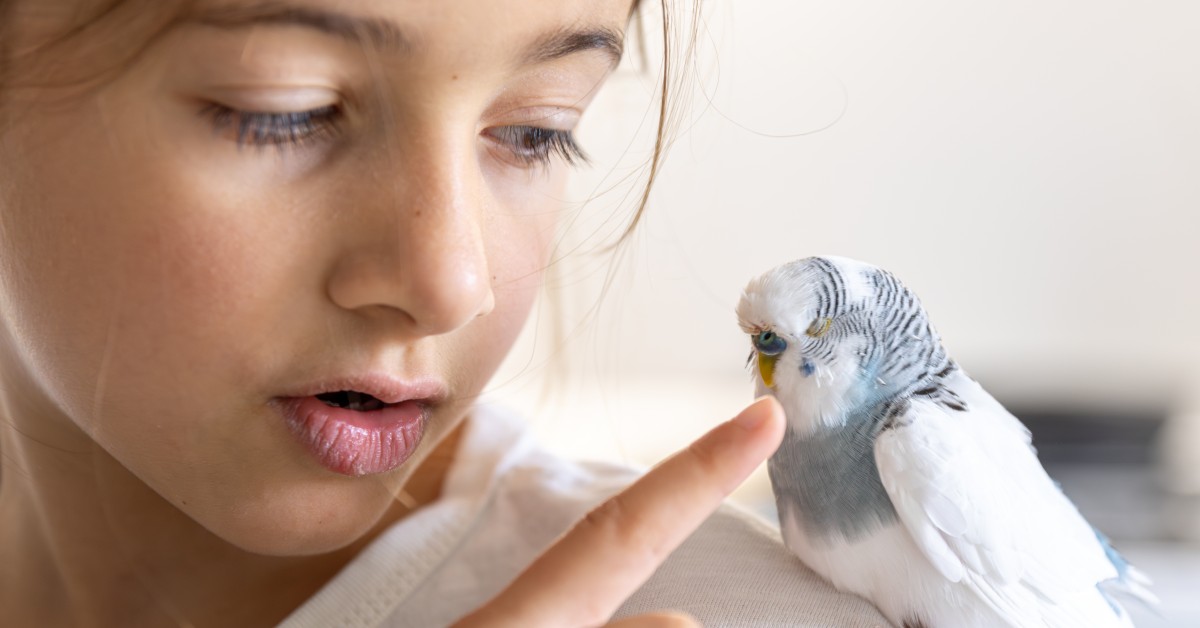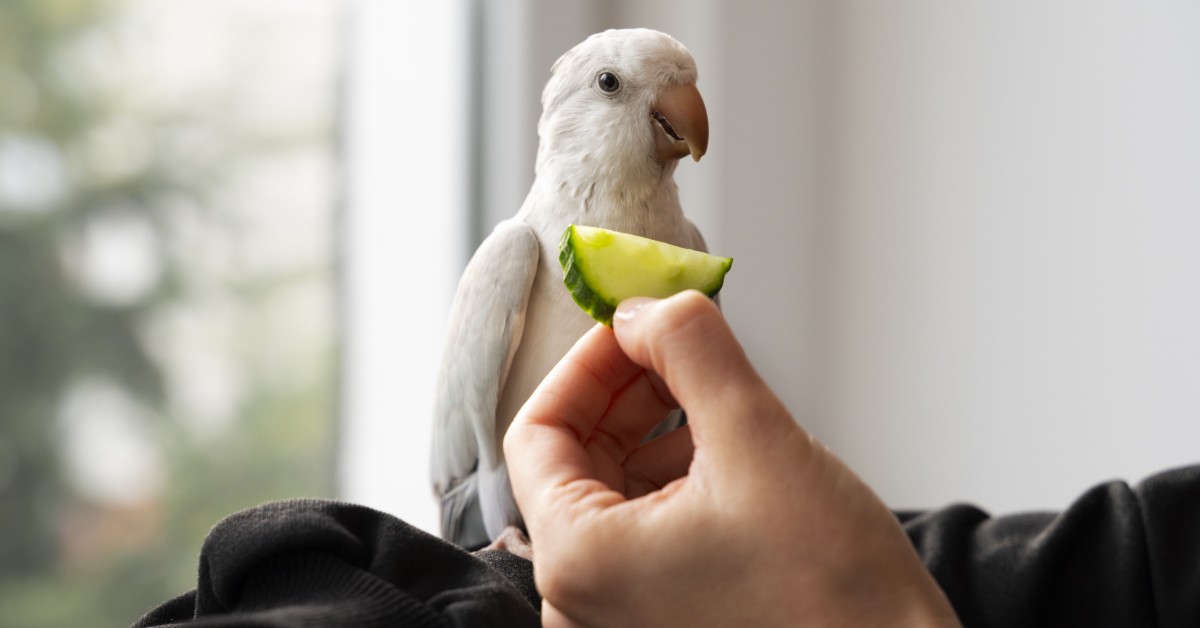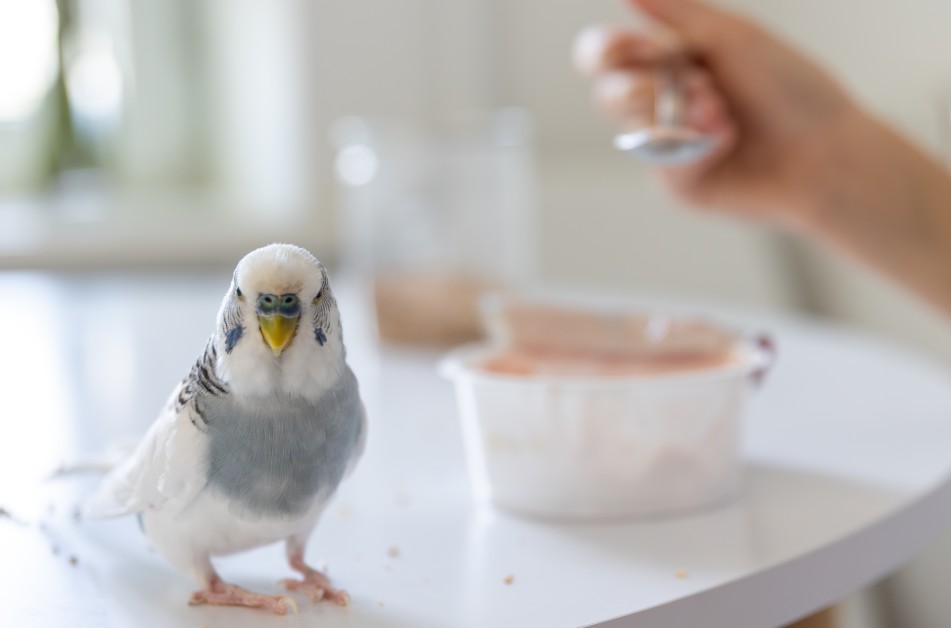Bird Handling Techniques for Beginner Bird Owners
Handling a pet bird requires a gentle approach to avoid triggering the animal’s “fight or flight” response.
.jpg)
Birds can be excellent companions for families with children, senior citizens, and petless households. These intelligent creatures are relatively easy to train and require minimal maintenance. However, pet birds are social creatures and have some emotional needs.
There are many different species of birds, each with its own unique needs. Cockatiels, Cockatoos, Budgerigars, Amazon Parrots, Canaries, and African Grey Parrots are some of the most common birds kept as pets. If you are new to keeping birds, you’ll want to learn proper bird handling techniques.
The Basics of Bird Handling
As a beginner bird owner, you may be unsure of the best way to handle your new pet. It is important to spend a lot of one-on-one time with your bird, but that does not necessarily mean holding and handling it right away. Not all birds enjoy human contact and some prefer to simply spend time with their humans from a distance.
Other birds enjoy being handled and receiving pets and attention from their owners. However, it’s important not to be too affectionate. Some birds will view their human companion as a potential mate, especially during periods of heightened hormones. Once you become familiar with your new pet, you can gauge how best to interact with your bird and how much physical contact your pet is comfortable with.
Picking Up a Bird
One of the first things you’ll need to learn as a new bird owner is how to safely pick up your pet. The correct way to pick up a bird is to offer your arm or hand and say “Step up” or a similar command. Of course, this requires you to teach your bird this command through practice and reward it when it performs the command successfully.
When teaching a bird to “step up,” you do not want to force the bird or grab it. This can cause the bird to lose trust, resulting in a fearful relationship. Pay attention to your pet’s body language to avoid unnecessary bites. Instead, use positive reinforcement to help your bird learn new tricks and techniques.
To teach your bird to step up:
- Hold a treat in one hand and place your other hand just in front of the treat.
- Slowly move closer to the perch until you are directly in front of your bird.
- Lure the bird onto your hand with the treat. It may take a few moments for your bird to get comfortable with your hands.
- As the bird steps onto your hand, say “Step up” or a similar command. Be consistent with whatever command you choose and use it every time.
- When the bird steps up, provide praise and a small treat.
Perching on Shoulder
Perching on a shoulder is a bird-handling technique that is commonly seen but generally not recommended. When you place a bird on your shoulder, you are unable to properly see its body language. You may not immediately notice if there is something that is scaring your pet or causing it stress. An agitated bird can result in a painful bite.
If you manage to get your bird on your shoulder, it may not stay put. Some birds will wander across its human, landing in places that make it difficult to gain control of the animal, such as the middle of the back. “Shoulder privileges” should be avoided unless the bird and its owner are well-acquainted.
Restraining a Bird
There may be times when you will need to gently restrain your bird, such as when your pet refuses to go back into the cage or when placed in immediate danger. It’s important to restrain a bird in a way that will not cause injury or traumatize the animal. The one-handed ringer’s hold is a useful restraining technique that is safe and simple to learn.
To perform the ringer’s hold:
- Use your non-dominant hand to grasp your bird. This leaves your dominant hand free for ringing and other tasks.
- Gently but firmly grasp the bird with its wings closed against the palm of your hand.
- Hold your bird’s head between the middle and index finger. Your ring and little finger should be closed around the bird’s body.
- For ringing, hold the leg between the thumb and the index, middle, or ring finger.
Larger birds can be more difficult to restrain. Consider using a towel to securely wrap the bird while holding the head firmly from the back with one hand. You can get your bird comfortable with towels beforehand by playing games, such as peek-a-boo.
Petting a Bird
One of the most exciting parts of being a new bird owner is getting the chance to pet your new bird. However, you don’t want to place your fingers near your bird until you learn the proper way to pet a bird. Not all birds will warm up to petting right away and you don’t want to force it. Instead, allow your pet to gradually become familiar with your hands before attempting to pet them.
To pet your bird:
- Calmly approach your bird and make your presence known.
- Read your bird’s body language to ensure that it’s comfortable.
- Never pet below your bird’s neck as this can cause behavioral issues.
- Start by lightly touching or petting the bird’s beak.
- Shift to the side of the bird’s head and work up to the neck and top of the head.
Learning Bird Handling Techniques
Birds can make great pets when properly trained. By working with your pet bird over time and implementing correct bird handling techniques, beginner bird owners can soon form an affectionate bond with their new pet.
Ready to start saving money on pet wellness care?
Then take a look at Mint Wellness, the pet wellness plan that provides fast reimbursement on routine pet care. Save on vaccinations, wellness exams, preventatives, dental, and more!
Learn More


